sometimes i think that the Bermuda triangle creates hurricane and natural causes ( is it strange that i'm a teen interested in history i need an answer from a teen)
Why the Bermuda Triangle Is Never on a Map
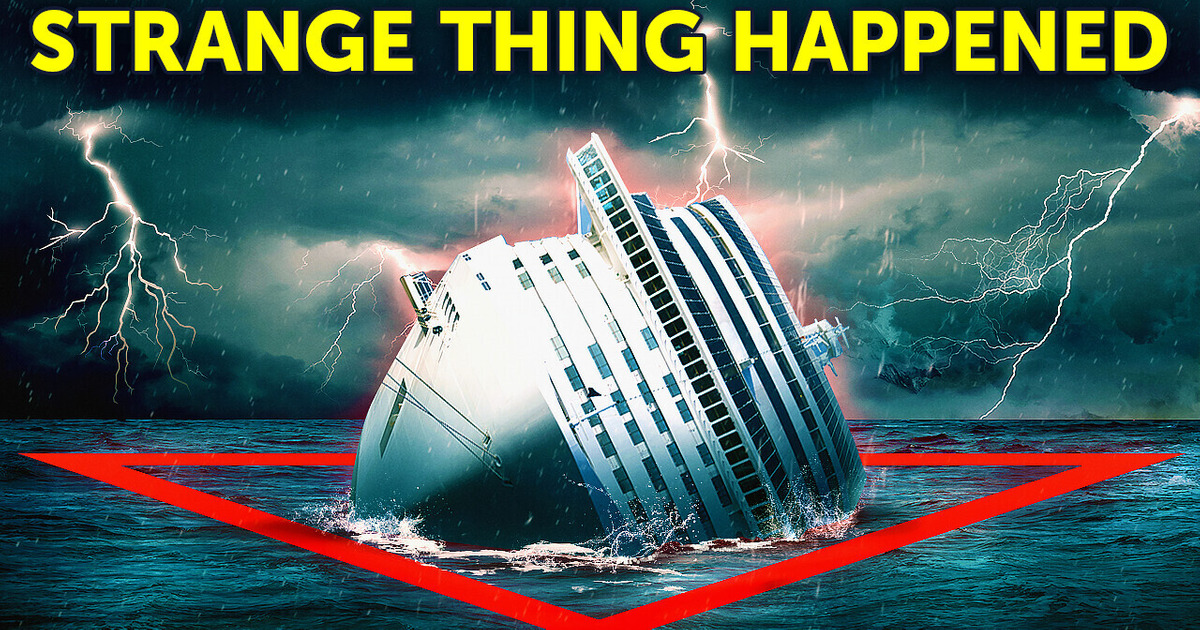
Hmmm... Can we estimate how many ships and airplanes were lost in the Bermuda Triangle? Have their disappearances resulted from human error or weather phenomena? Let’s try to find out. We have a curious story of the S.S. Cotopaxi. This ship vanished in 1925, traveling from Charleston, South Carolina, to Havana. It never reached its destination. Years later, in the 1980s, a wreck was found 40 mi off St. Augustine, Florida. Since specialists could not precisely determine what and where it came from, they nicknamed it “Bear Wreck”. It took many additional years of work, done mainly by marine biologists, to identify that this ship was indeed the missing S.S. Cotopaxi. This was confirmed in January 2020. How did the ship just reappear? And how did it get there, since this mysterious shipwreck isn’t even in the Bermuda Triangle?
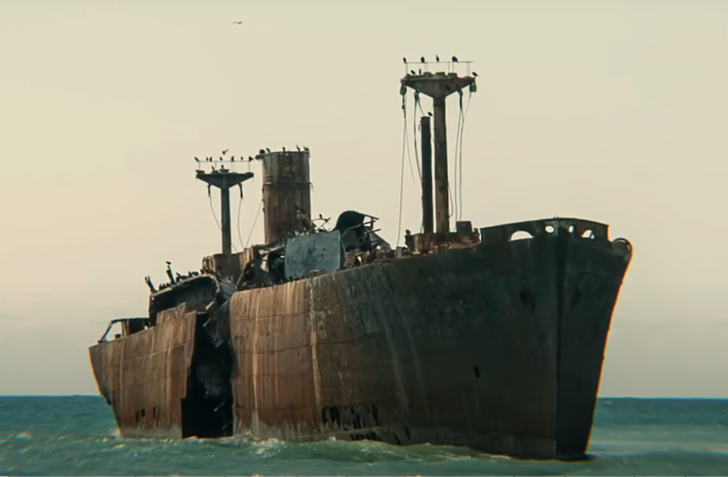
Let’s see who came up with this term, “Bermuda Triangle”. Can you actually pinpoint the triangle on a map? No, it’s not an officially recognized location either. The Bermuda Triangle does not appear on any world map. Nobody has agreed on its exact boundaries. There are only assumptions with approximations of the entire area ranging between 500,000 and 1.5 million square miles. By all approximations, the region has a vaguely triangular shape. In 1964 an American author named Vincent Hayes Gaddis first came up with the idea when writing an article for Argosy magazine. He used the Bermuda Triangle to describe a triangular region “that has destroyed hundreds of ships and planes without a trace.”
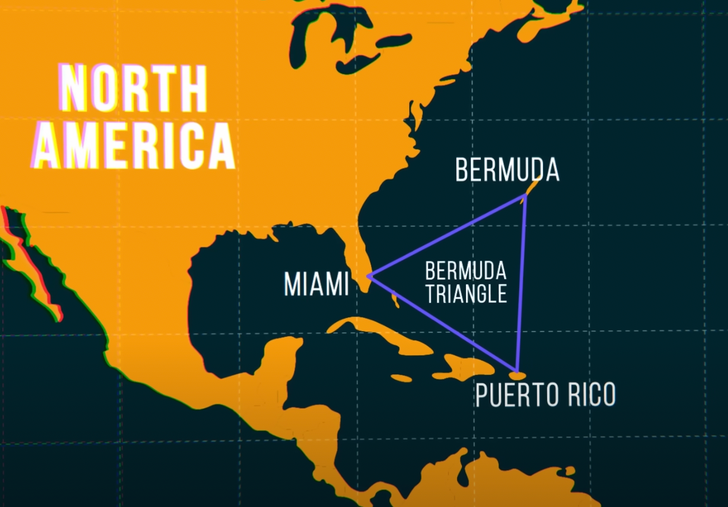
It is pretty hard to get the number of lost ships and planes because some ships and aircraft have gone missing without leaving a trace. Their wreckage in the region has not been recovered. But the recorded stories should help us. Legends about the Bermuda Triangle date back to the 15th century. Like that of the Italian explorer Christopher Columbus. When sailing through the Atlantic waters, he passed by this location in the late 1400s. In what we now know as the Bermuda Triangle, he saw a huge flame that seemed to just crash into the ocean. Later, he saw an unusual light flashing in the distance at the exact location. Like many other sailors since then, his compass had severe malfunctions. Flight 19: a navy plane on a routine schedule back in 1945 also started the Bermuda Triangle legend.
It was commanded by Lieutenant Charles Taylor, and it’s recorded that he just got lost in the triangle for no reason. Since pilots had no GPS back then, they had to trust their compasses and keep track of how long they’d been flying in a specific direction and their speed. Shortly after completing the task, both of the compasses onboard stopped working correctly. Records found after the plane’s disappearance also indicate that Taylor didn’t have a watch on that particular day. The initial report stated that pilot error was to blame for this unfortunate event. However, because people weren’t satisfied with this outcome, it was changed to “causes or reasons unknown after several reviews.” One surviving pilot named Bruce Gernon suggested he went through an electronic fog while passing above the triangle, making him travel through time!
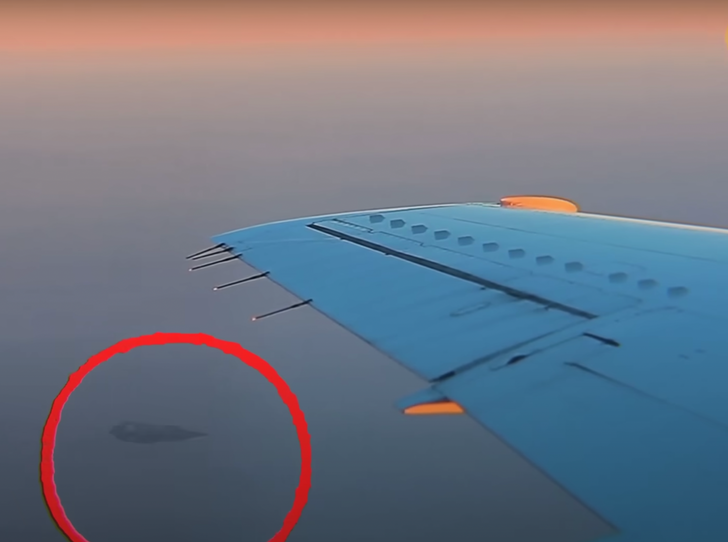
In 1970, when this incident happened, he was flying his aircraft when it was surrounded by two huge clouds that formed a whirlpool and spiraled. Like many others before him, he noticed that his navigation devices were malfunctioning. When he eventually made it out of those clouds, he discovered that his flight had only taken 35 minutes. It should have taken 75 in total. Since he had no other reasonable explanation for what he went through, he believed he must have been pushed forward in time. It’s not only strange-looking clouds that have been seen above the Bermuda Triangle. In 2014, a pilot recalled almost colliding with a flying object that he could not identify whatsoever! Some of these strange encounters were even caught on tape. It’s the case of an early 2015 flight whose passengers noticed a curious object just floating over the ocean. The pilots have yet to figure out what they actually saw back there.
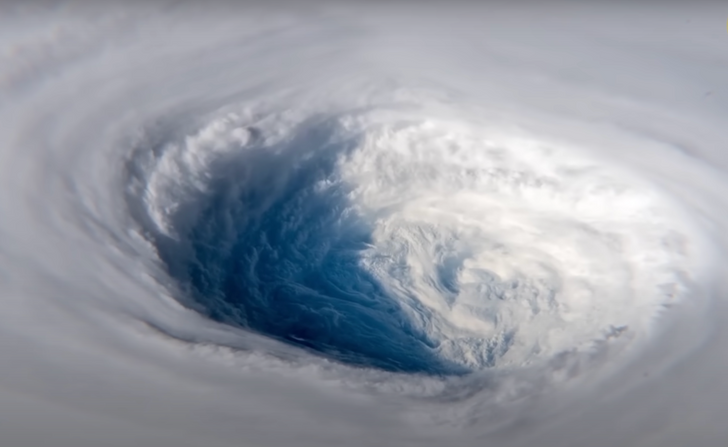
Ok, not all of the possible explanations have been this unusual. Oceanographers, for example, have also tried to explain why ships disappear around here. So, they recently came back to one of their old theories: rogue waves. They are immense walls of water that just pop up suddenly. If multiple such waves rise simultaneously, they overlap, like a wave sandwich. If one single wave can reach over 30 feet tall and happen simultaneously, it can create a rogue wave that can surpass 100 feet high. These types of waves can quickly overtake even the biggest of ships. Meteorologists came up with their own explanation, too: hexagonal clouds. These unusual types of clouds can generate winds of up to 170mph. And they are pretty significant, too, some reaching 20 to 55 miles across. As such, waves inside these wind giants can go as high as 45 feet.
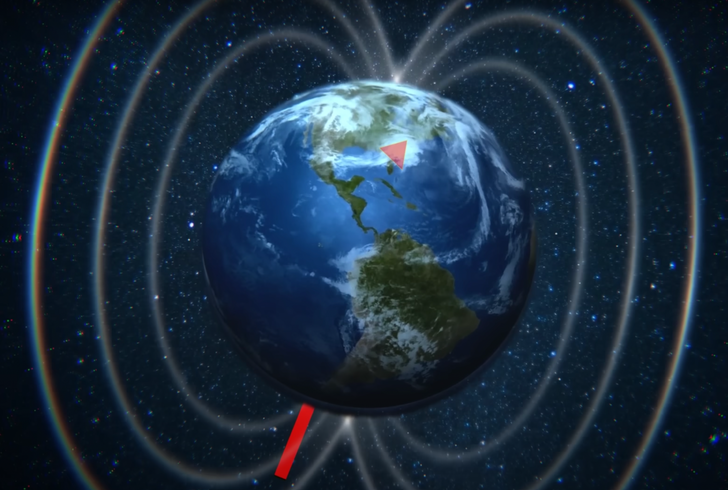
The Earth’s own magnetic force might also have something to do with it. Within the Bermuda Triangle, compasses point to true north, the geographic North Pole, rather than magnetic north, the shifting magnetic North Pole. Some have even explained that since these two perfectly overlap in the Bermuda Triangle, it can cause a magnetic phenomenon that could make navigation devices malfunction. It’s called the agonic line. The problem is that scientists have discovered that this line moves each year. It might have passed through the Bermuda Triangle at one point, but it’s now through the Gulf of Mexico.
Other strange natural phenomena found along the coast of Norway could help explain why the Bermuda Triangle has claimed so many ships. There are some craters there — measuring up to half a mile wide and are 150 ft deep. Scientists believe they were created by methane gas bubbles.
This gas seems to be leaking from deposits hidden deep in the seabed. Once the gas reaches a certain quantity, it bursts to the surface and causes eruptions. So, do pilots and ship captains actually avoid this area today? Could this explain why there are fewer ships that get lost there nowadays?
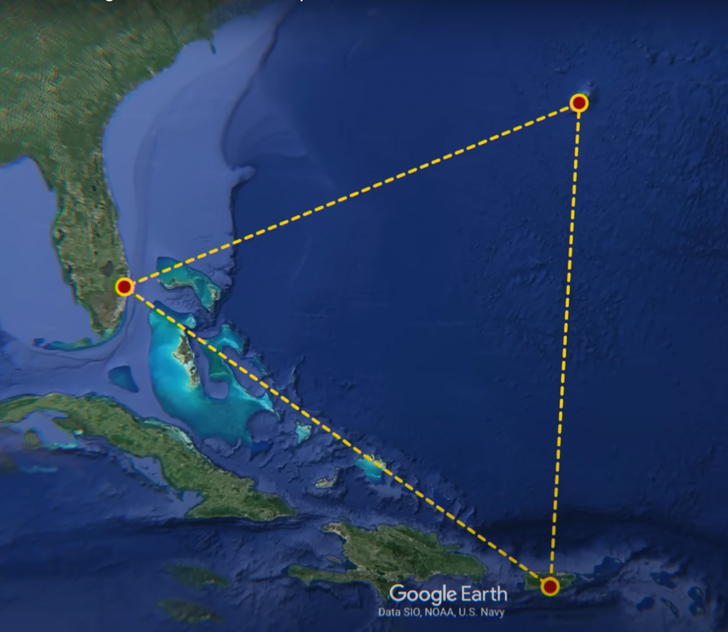
But, if you’ve ever flown from Miami to San Juan, Puerto Rico, you probably know that’s not true. As for ships, if people would avoid the Bermuda Triangle, nearly all Caribbean vacations would be spoiled. To this day, there are a lot of flights that go over the Bermuda Triangle, so it’s clear nobody is avoiding it.
This place is one of the most heavily traveled shipping lanes in the world. Nowadays, the Bermuda Triangle has heavy daily traffic, both by sea and air. But the Bermuda Triangle is indeed subject to tropical storms and hurricanes that happen very often. Let’s keep in mind that The Gulf Stream—a strong ocean current that causes sharp changes in local weather—passes through the Bermuda Triangle. Besides, the deepest point in the Atlantic Ocean, the Milwaukee Depth, is also located in the Bermuda Triangle. The Puerto Rico Trench reaches almost 27,500 feet at the Milwaukee Depth.
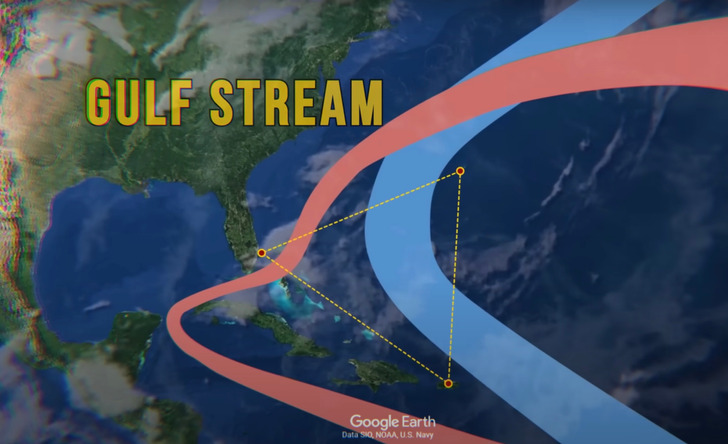
So, if you think about it, the whole mystery is a perfect combo of human error, bad weather, and a lot of ship traffic. This was confirmed by data provided by the U.S. Coastguard. If you look at percentages, the number of ships or planes that go missing in the Bermuda Triangle isn’t different from anywhere else. Disappearances do not happen more often than in any comparable region of the Atlantic Ocean. Official statistics say that around 50 ships and 20 airplanes have vanished while traveling through this region. That’s another reason why the total number is so hard to pinpoint. Nobody could describe its rescue in official records if a boat was reported missing. There are also some events that, it turns out, didn’t happen at all, adding up to those false reports. Like that of a plane crash back in 1937, off Daytona Beach, Florida, that local papers, surprisingly, revealed nothing about.
Comments
Related Reads
11 People Who Will Relive the “Hospitality” of Their Friends in Their Nightmares

8 Situations That Prove Moms’ and Dads’ Parenting Styles Are Way Different

18 Celebrities That Changed Their Looks So Many Times, We Forgot What They Used to Look Like

16 Moments That Remind Us to Stay Kind Even If the World Turns Ice Cold

I Refuse to Get a Lower Salary Than the Colleague I Trained

14 People Who Walked Straight Into Awkward Moments

I Wasn’t Invited to My Son’s Baby Reveal, and It Led to a Painful Discovery

My MIL Mocked Me at My Husband’s Birthday Party—I Gave Her a Brutal Reality Check

I Refuse to Keep Supporting My Daughter and Her 5 Kids for Free

15 Stories That Prove Quiet Kindness Is the Strength the World Still Needs

15+ Raw Stories About Jealousy That Can Leave You Speechless

Everything Seemed Normal in My Marriage Until I Found the Part of Our Story My Wife Never Mentioned
